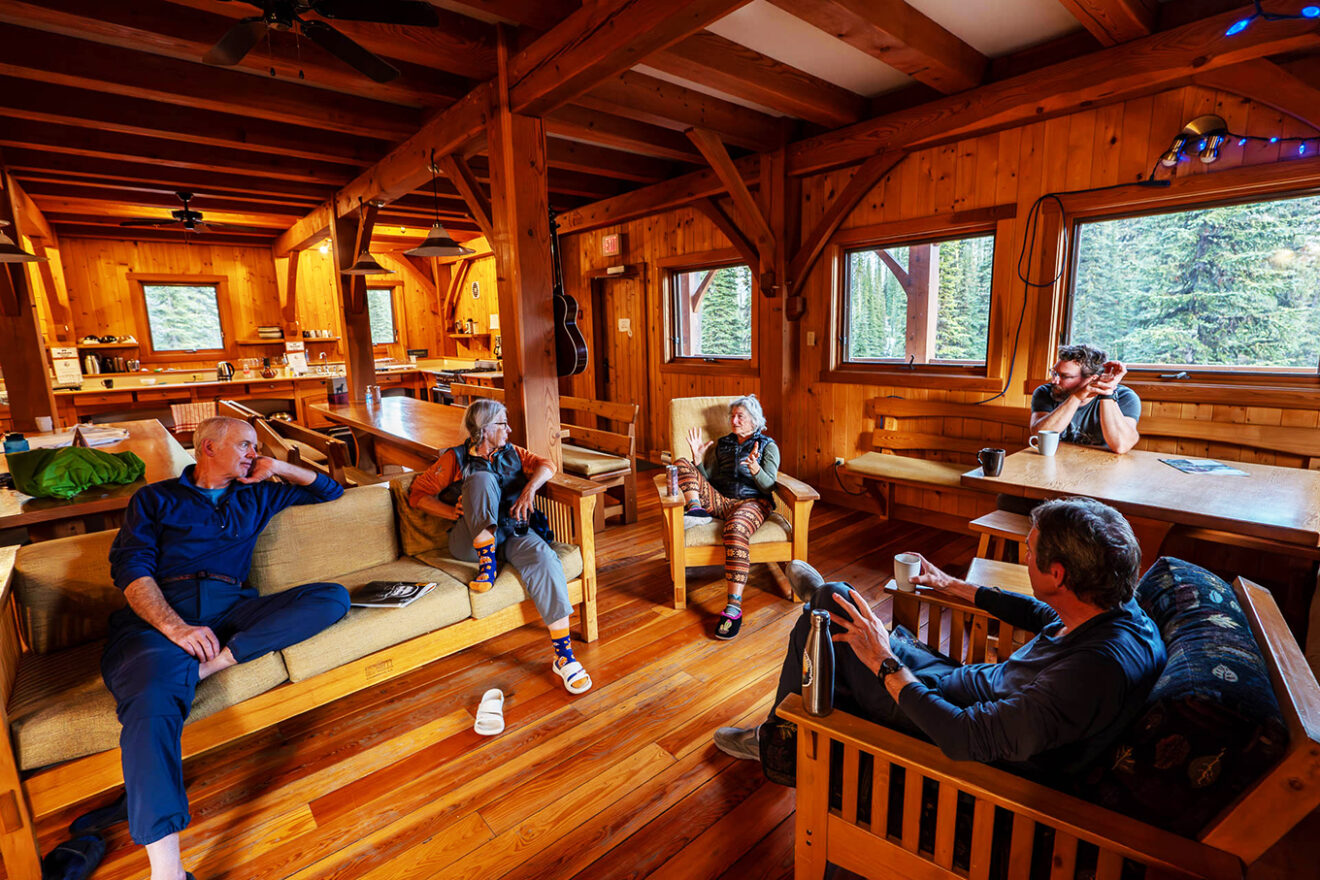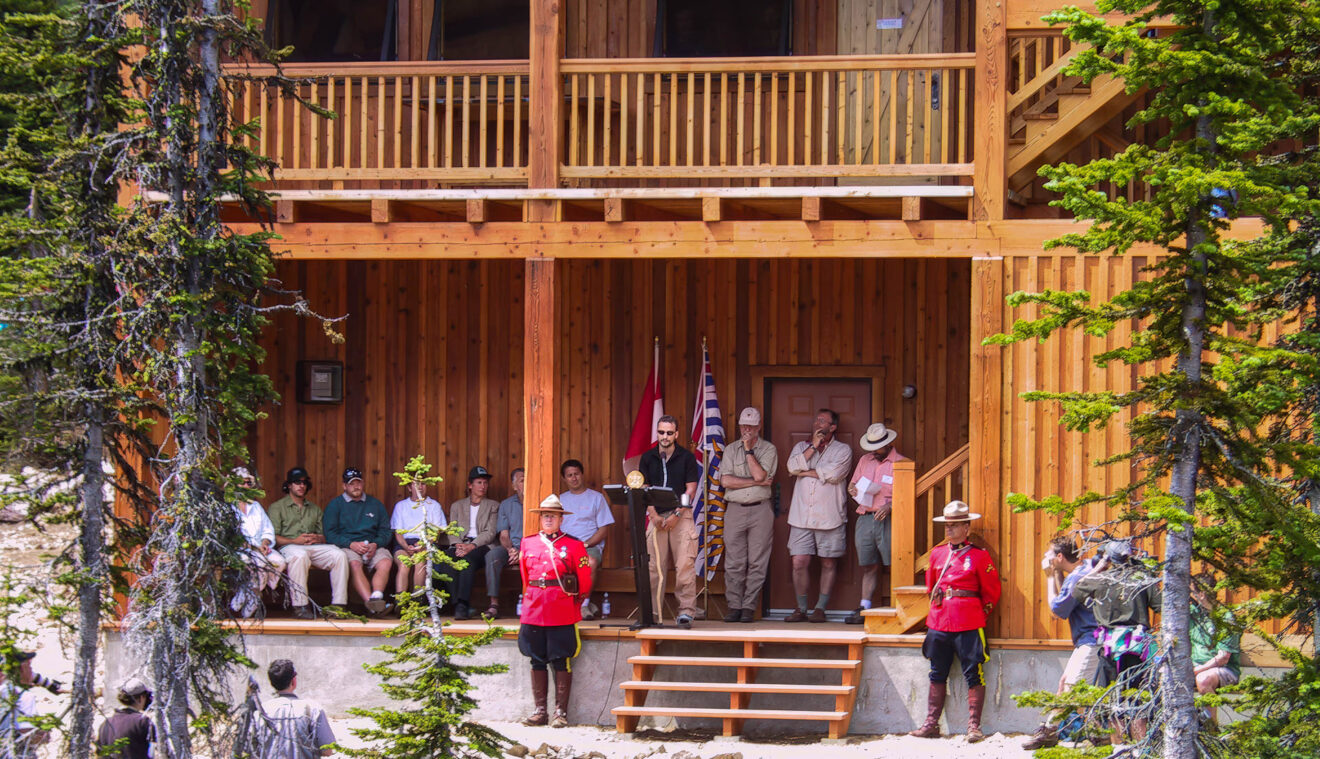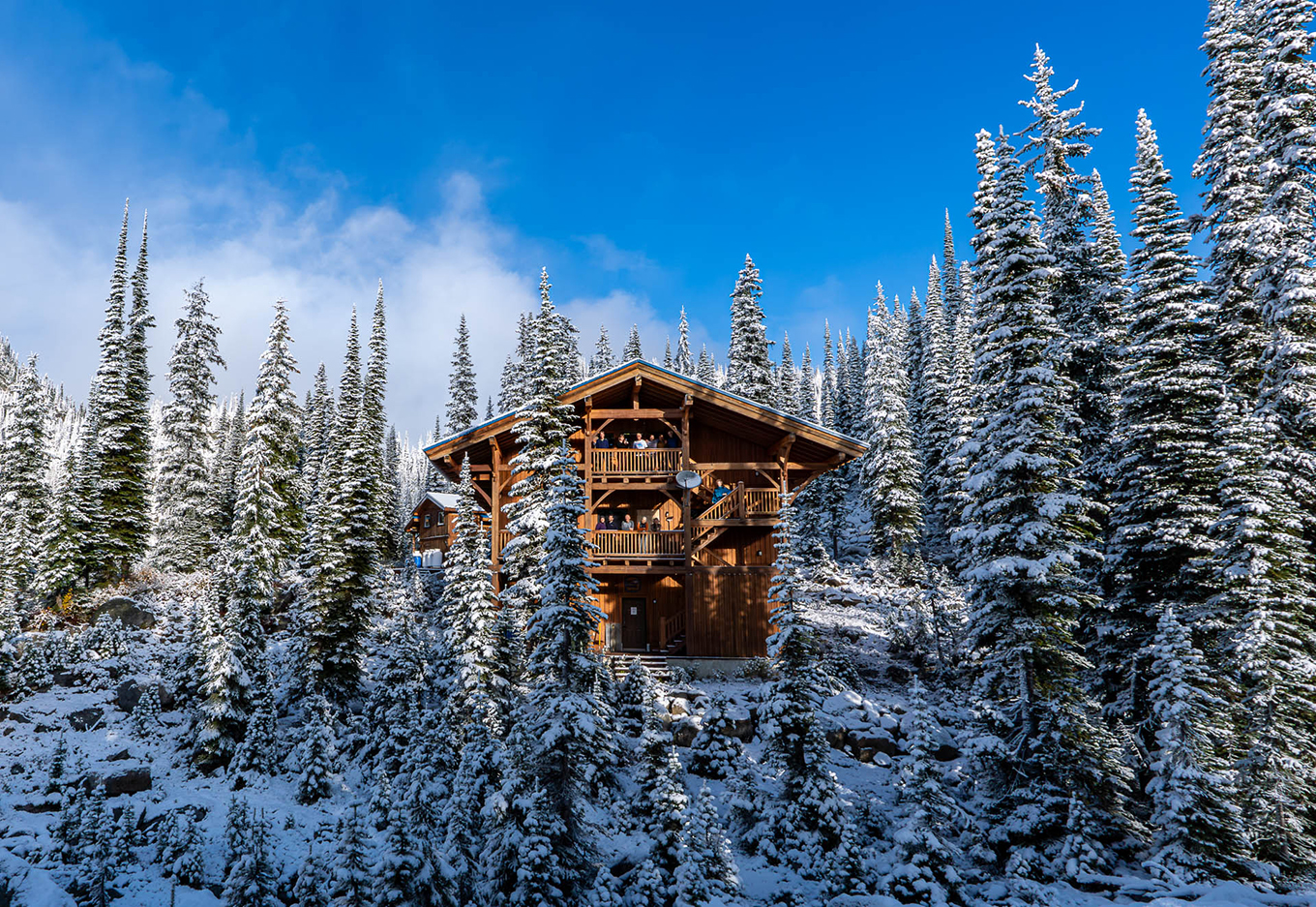The Kokanee Glacier Cabin Story
Twenty years ago, a remarkable endeavour took shape in Kokanee Glacier Provincial Park within the southern Selkirk Mountain range.
The construction of a backcountry cabin, designed to raise national awareness about avalanche risk and promote backcountry safety, epitomized the collaborative spirit and dedication of a wide array of individuals, volunteer organizations, and private businesses across Canada.
In the summer of 2002, following four years of planning and leadership by BC Parks — Kootenays Recreation Officer Roger Tierney and District Manager BC Parks – Kootenays — Ministry of Environment Wayne Stetski, it all came together.
On-site construction supervision was provided by Glenn Campbell, fundraising chaired by Mark Sager, and craftsmanship by Hamill Creek Timber Homes and Temple Timber Homes, hailing from Argenta and Kaslo.
Two years before construction, a committee comprising Canada’s senators and business leaders was formed to oversee corporate fundraising for the project. Their tireless efforts, unpaid but dedicated, played a pivotal role in making the Kokanee Glacier Cabin project a reality.
Operated by a contract with the Alpine Club of Canada, the 20-person capacity cabin officially opened its doors on July 13, 2003, commemorating more than a dozen individuals who had lost their lives to avalanches while pursuing their mountain passions within the park.
The cabin boasts several eco-friendly features, including tables, benches, and bunk beds crafted from recycled wood sourced from a 40-year-old wooden stave water reservoir tank dismantled in Syringa Provincial Park in 2002.
 Joanna Temple, center and wife of Chris Temple one of the cabin builders — Temple Timber Homes — is pictured during an informal discussion at the 20th anniversary of the construction of Kokanee Glacier Cabin.
Joanna Temple, center and wife of Chris Temple one of the cabin builders — Temple Timber Homes — is pictured during an informal discussion at the 20th anniversary of the construction of Kokanee Glacier Cabin.
A micro-hydroelectric generating system, coupled with a sophisticated load management system, provides 90% of the cabin’s energy needs, significantly reducing fossil fuel usage and helicopter transportation costs for fuel.
Pre-COVID-19, approximately 1250 people used the facility annually, and now due to wastewater capacity issues, occupancy has been limited to 12 people, knocking that figure down to roughly 800 overnight users per year.
The seed for this ambitious project was sown in the spring of 1998 when a design and environmental impact assessment study for a new alpine cabin was presented, aimed at replacing the aging Slocan Chief Cabin, which had stood for 105 years.
Various local and provincial interest groups, including the Kootenay Mountaineering Club, the Friends of West Kootenay Parks Society, the Association of Canadian Mountain Guides, the Canadian Avalanche Association, the ACC, and the Selkirk College Recreation Program, collaborated to guide the concept, planning, and design of the new facility.
The loss of Michel Trudeau to an avalanche in the park in November 1998 prompted the Trudeau family to lend their support to raise funds for the cabin’s construction and to increase awareness about avalanche hazards.
The national fundraising effort, spanning from August 1999 to March 2021, raised an impressive $1.3 million.

The plaque at the Kokanee Glacier Cabin commemorates more than a dozen individuals who had lost their lives to avalanches while pursuing their mountain passions within the park. — Submitted photo
This amount not only covered the construction of the new alpine cabin, which won the BC Premier’s Award for promoting innovation and excellence in 2004 but also facilitated the restoration of the Slocan Chief Cabin, transforming it into a natural and human history interpretive center.
Since its inauguration two decades ago, the cabin has served as a vital resource for countless backcountry enthusiasts, fostering a sense of community and shared knowledge.
The Canadian Avalanche Association has chosen this location to host numerous educational courses, preparing future industry professionals and perhaps as a result of the knowledge generated, the number of avalanche deaths in the park has plummeted.
The Kokanee Glacier Cabin stands as a testament to the power of collaboration, community support, and a shared commitment to backcountry safety, leaving an indelible mark on the history of the Selkirk Mountain range and the hearts of those who cherish wilderness.

The grand opening ceremony of the Kokanee Glacier cabin on July 13, 2003 was hosted by Mike Mortimer, Wayne Stetski, Sasha Trudeau and Nancy Greene. — Photo courtesy Dave Healy
— Source, Pat Morrow, born and raised in Invermere and grew up in Kimberley.

